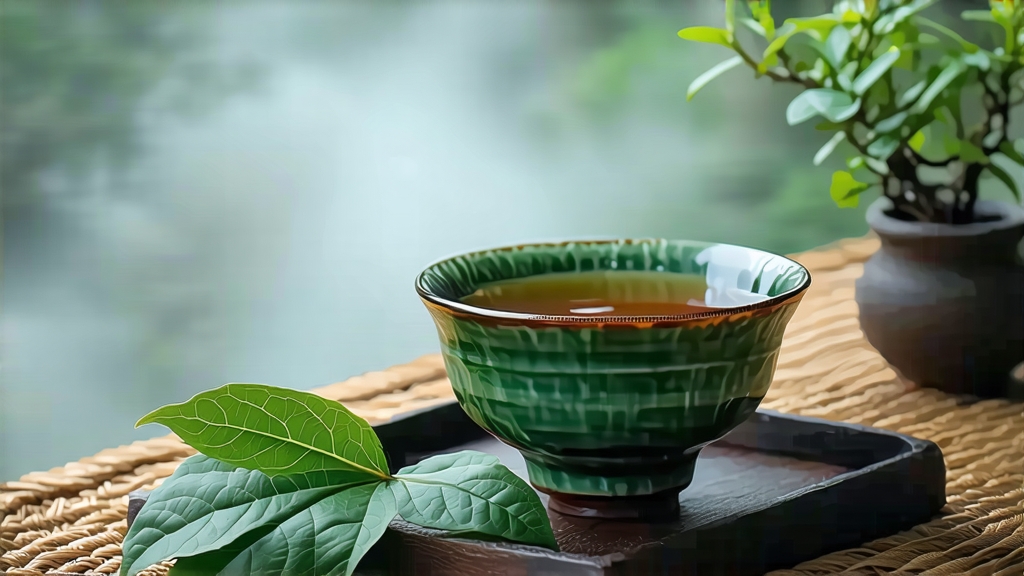
Tie Guan Yin, literally “Iron Goddess of Mercy,” is the most celebrated sub-variety of Chinese oolong. Born in the granite ridges of Anxi, Fujian, it carries seven centuries of legend, commerce, poetry, and daily ritual in every twisted emerald leaf. To understand China’s half-oxidized family of teas, one must begin with this single cultivar, because Tie Guan Yin is both a place-bound craft and a moving target: each generation of farmers redefines what “perfect” aroma, texture, and aftertaste should be. The following 2,000 words walk you from myth to mug, offering the practical knowledge any international tea lover needs to brew, taste, and appreciate the living legend.
- Myth and Migration
The story begins around 1725, when a devout farmer named Wei Yin found a rust-colored iron statue of Guan Yin, the Bodhisattva of Compassion, abandoned in a mountain grotto. He carried the heavy figure home, cleaned it, and burned incense daily. One night the goddess appeared in a dream, pointing to a distant ravine where a single tea tree shimmered in moonlight. Wei dutifully transplanted the tree to his garden, propagated it, and discovered a liquor so fragrant it seemed to preach kindness itself. Locals soon named the cultivar “Iron” to honor the statue’s metal and “Guan Yin” to thank the deity. Whether history or pious marketing, the tale fixed Tie Guan Yin’s identity as a gift worthy of meditation.
By the late Qing dynasty Anxi merchants had compressed the leaf into tiny paper-wrapped bricks and floated them down the Jiulong River to Xiamen’s treaty port. Dutch and British captains carried the cargo to Jakarta, Amsterdam, and eventually New York, where 19th-century connoisseurs listed “Ti Kwan Yin” alongside Souchong and Pekoe in auction catalogs. Today Anxi County ships 45,000 tons annually, but the finest lots—fewer than 300 kg per harvest—never reach commodity brokers; they are pre-sold to collectors in Shenzhen, Taipei, Singapore, and, increasingly, Berlin and San Francisco.
-
Botanical Fingerprint
Tie Guan Yin is a clonal cultivar botanically classified as Camellia sinensis var. sinensis ‘Tie Guan Yin.’ Its shrubs stand waist-high, allowing hand-pluckers to reach the dimpled, oval leaf that is thicker yet more tender than neighboring Ben Shan or Mao Xie cultivars. The real signature is the mid-vein: on Tie Guan Yin it bends slightly inward like a miniature scimitar, a detail graders check with penlights during night sorting. Grafted bushes can survive 60 years, but flavor peaks between year 8 and 25 when root depth balances mineral uptake and leaf vigor. -
Terroir: Granite, Fog, and Midnight Dew
Anxi lies 25° north, 1,000 m above the Taiwan Strait’s maritime winds. Day-night temperature differentials can exceed 15 °C, locking in floral precursors. The bedrock is Proterozoic granite rich in potassium and magnesium; when it weathers into coarse sand it drains quickly yet holds just enough moisture for the famous “yun gan hui”—a sweet, throat-coating aftertaste that arrives 30 seconds after swallowing. Micro-zones matter: Xianghua produces gardenia notes, while Gande delivers green almond; true tea hunters ask for village-level GPS coordinates before they bid. -
Craft: The Eight-Stage Ballet
Modern Tie Guan Yin is made by eight sequential steps, each timed to the hour. Picking happens at dawn from late April to early May, when two leaves and a bud weigh 0.3 g together—any heavier and polyphenols are too bitter. Sun-withering lasts exactly 25 minutes at 28 °C leaf surface temperature; farmers flip leaves every 7 minutes to ensure even water loss. Indoor withering on bamboo trays follows for 6–8 hours, during which leaf edges redden as enzymes meet oxygen.
The most cinematic stage is shaking: 3 kg of leaves are placed in a round rattan basket and rhythmically tossed upward. Master craftsmen listen for a subtle “sha-sha” sound that signals cell rupture without bruising. This is repeated five times with 45-minute resting intervals; oxidation climbs steadily to 30 %. Fixation